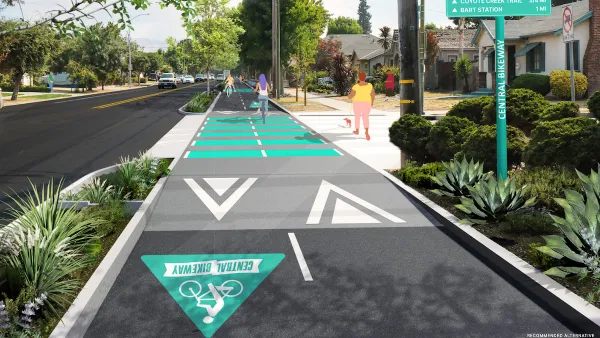The amendment is a thorn in the side of affordable housing advocates, who blame "Faircloth Limits" for inhibiting public housing construction.

As the debate over federal housing policy heats up, Jared Brey provides a concise explanation of the Faircloth Amendment, a 1990s-era rule that has been a recent target of affordable housing advocates. Touted as the "first step to addressing the country’s housing affordability problem" by Ross Barkan in the New York Times, repealing the amendment would "remove a legal obstacle to a series of ambitious housing plans that progressives have rallied behind."
Introduced as part of the 1998 Quality Housing and Work Responsibility Act, the Faircloth Amendment amended the Housing Act of 1937 to maintain public housing units at 1999 levels, effectively preventing housing authorities from ever maintaining more public housing than they did then. The amendment was enacted amid a broader welfare reform movement "grounded in a belief that public assistance programs were detrimental to people’s ability to achieve economic independence." In the 1990s, many lawmakers had a perception of public housing as "crime-infested, unhealthy places that kept people trapped in poverty."
However, "Faircloth Limits" aren't the biggest factor in limiting affordable housing. "Since the 1980s, the restriction of federal funding has had a much bigger impact on public housing than the Faircloth Amendment," and many cities own fewer units than their Faircloth limits allow. A lack of federal funding is the most pressing obstacle facing affordable housing production, but with proposals like the Green New Deal for Public Housing on the table, which calls for $180 billion in spending, significant change in federal housing policy seems more possible.
FULL STORY: What Is the Faircloth Amendment?

Planetizen Federal Action Tracker
A weekly monitor of how Trump’s orders and actions are impacting planners and planning in America.

Silicon Valley ‘Bike Superhighway’ Awarded $14M State Grant
A Caltrans grant brings the 10-mile Central Bikeway project connecting Santa Clara and East San Jose closer to fruition.

Amtrak Cutting Jobs, Funding to High-Speed Rail
The agency plans to cut 10 percent of its workforce and has confirmed it will not fund new high-speed rail projects.

California Set to Increase Electric Truck Chargers by 25%
The California Transportation Commission approved funding for an additional 500 charging ports for electric trucks along some of the state’s busiest freight corridors.

21 Climate Resilience Projects Cancelled by the EPA
The federal government has pulled funding for at least 21 projects related to farming, food systems, and environmental justice to comply with one of Trump’s early executive orders.

Trump Executive Order on Homelessness Calls for Forced Institutionalization
The order seeks to remove legal precedents and consent decrees that prevent cities from moving unhoused people from the street to treatment centers.
Urban Design for Planners 1: Software Tools
This six-course series explores essential urban design concepts using open source software and equips planners with the tools they need to participate fully in the urban design process.
Planning for Universal Design
Learn the tools for implementing Universal Design in planning regulations.
Yukon Government
Caltrans
New Jersey Institute of Technology
Mpact (founded as Rail~Volution)
City of Camden Redevelopment Agency
City of Norman, Oklahoma
City of Portland
City of Laramie





























